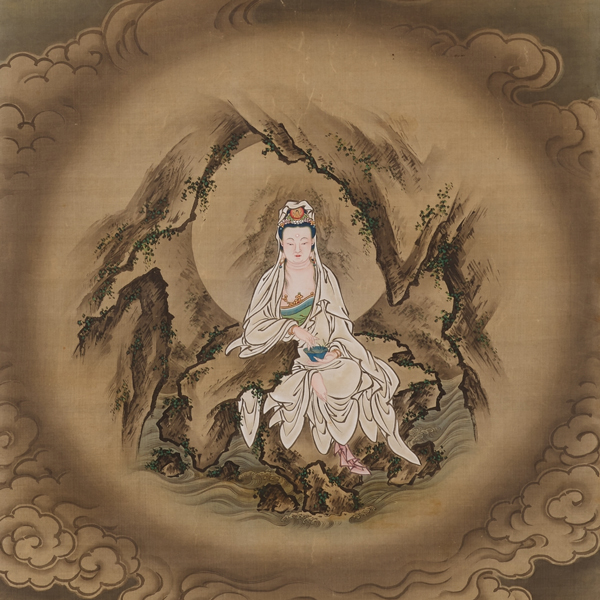The Arts of Buddhism | 8th–16th century
-

Manifestation of the Bodhisattva Kannon (detail), By Takuhō Dōshū, Edo period, 1677
Japanese Gallery (Honkan) Room 3
May 21, 2024 (Tue) - June 30, 2024 (Sun)The beliefs and arts of Buddhism, along with its followers, became more diverse over time. In the Heian period (794–1192), the emperor and court nobility practiced and supported Buddhism. They used their vast wealth to build temples and create images for worship, often in delicate styles reflecting their tastes.
In the Kamakura period (1192–1333), the samurai gained political power, also becoming patrons of Buddhism. They preferred Buddhist art that was clear and dynamic, which led artisans to develop new styles. Many common people also became followers of Buddhism at this time, blending this religion with local beliefs, especially in the Muromachi period (1392–1573).
During these centuries, monks brought new schools of Buddhist thought from China, and developed new schools in Japan based on older teachings. Buddhism also became more integrated with Shinto, the indigenous religion. The paintings, sculptures, ritual tools, and sacred calligraphy on display illustrate this diversity in Buddhism.
| Designation | Name | Creation/ Excavation/ Provenance |
Period | Acquisition/ Ownership/ Accession Number |
CMT | ||
| Highlight | Important Cultural Property | The Eleven-Headed Bodhisattva Kannon | Kamakura period, 13th century | Lent by Komatsuji Temple, Chiba | |||
| Highlight | Important Cultural Property | The Thirteenth of the Sixteen Arhats | Kamakura period, 14th century | Lent by Zenrinji, Kyoto | |||
| Highlight | Important Cultural Property | Illustrated Gleanings on the Life of a Virtuous Monk | Kamakura period, 1323 | Lent by Joufukuji, Ibaraki | |||
| Highlight | Important Cultural Property | The Biography of the Monk Enchin | Heian period, 12th century | B-1402 | |||
| Highlight | Important Art Object | Flower Basket | Previously owned by Mantokuji Temple, Aichi | Kamakura period, 13th century | Gift of Ms. Setsu Yukiko, H-4808 |
